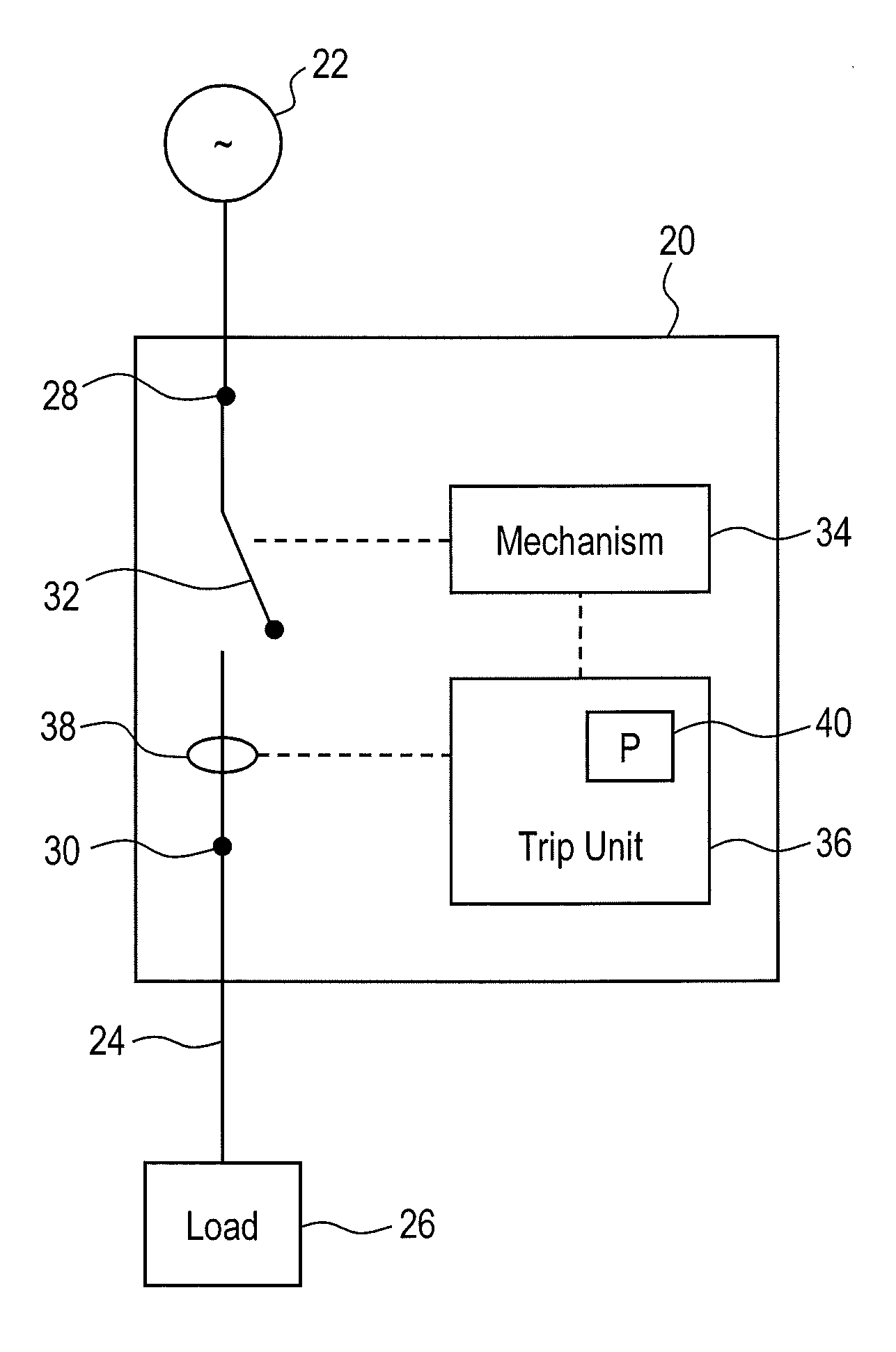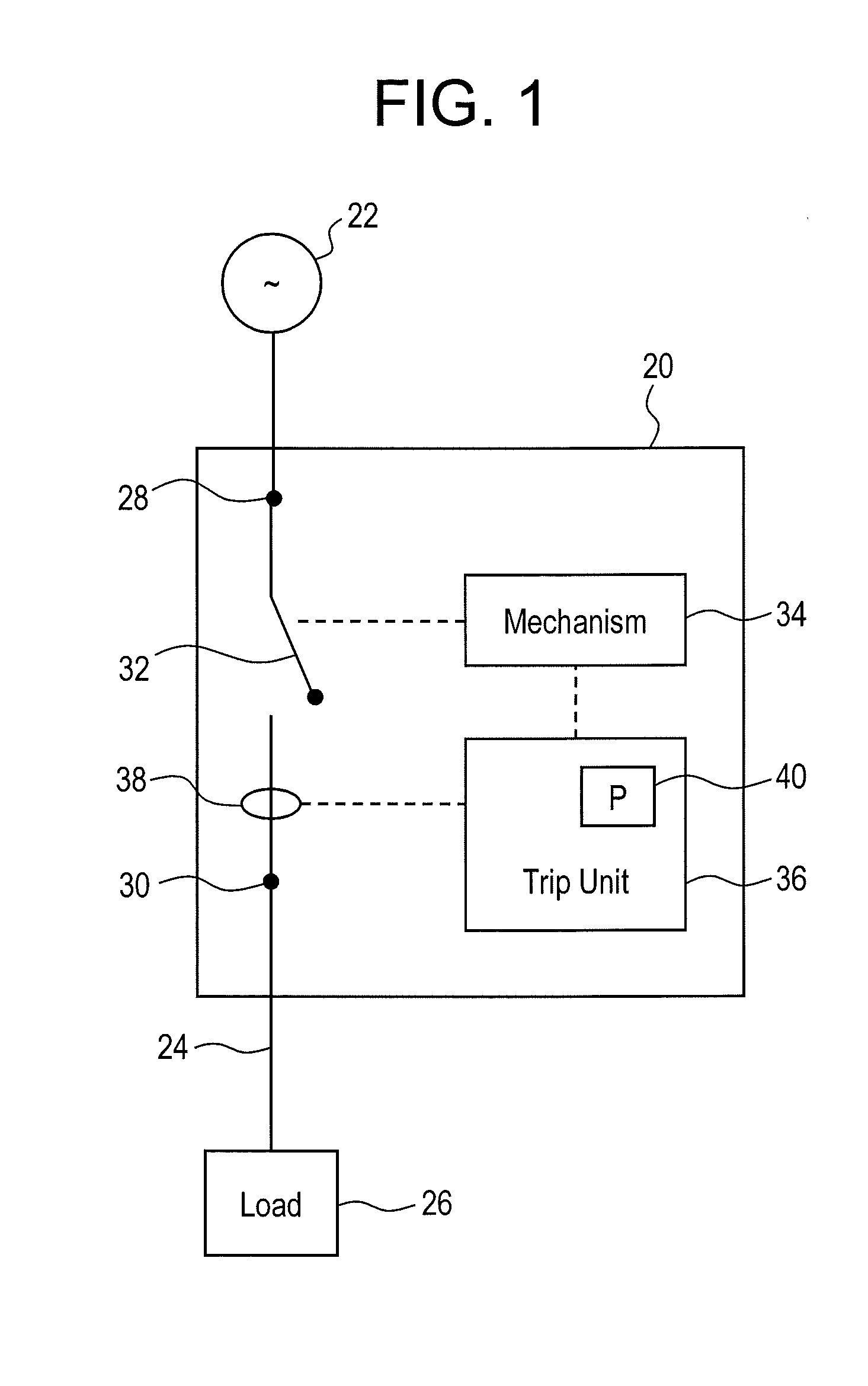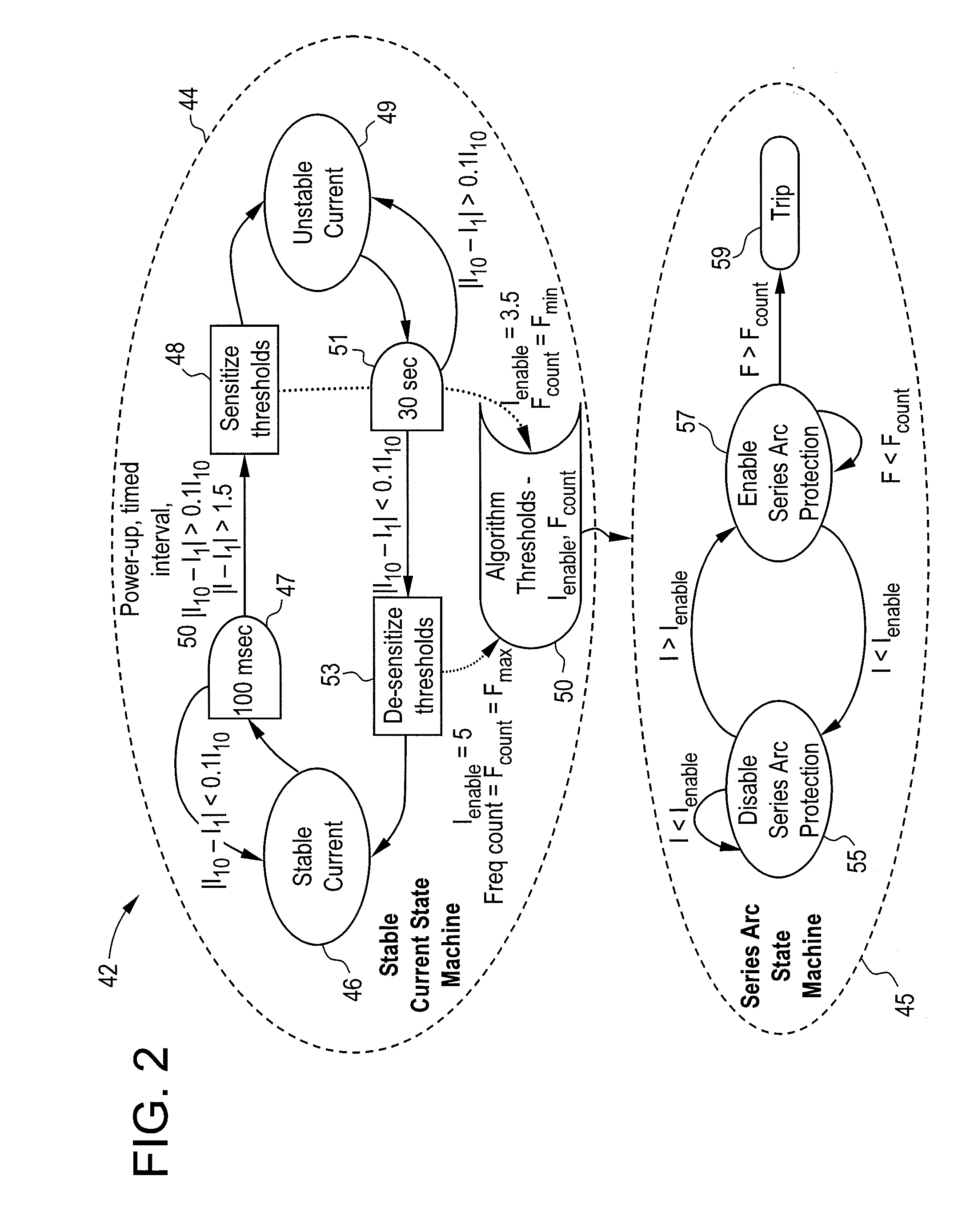Circuit breaker with arc fault detection and method of operation
a circuit breaker and detector technology, applied in the direction of testing circuits, emergency protective arrangements for limiting excess voltage/current, instruments, etc., can solve the problems of series arc fault, type of fault that can occur when an electrical conductor in series with a load is unintentionally broken, and the arc current cannot be greater
- Summary
- Abstract
- Description
- Claims
- Application Information
AI Technical Summary
Benefits of technology
Problems solved by technology
Method used
Image
Examples
example 1
[0040]To further illustrate the operation of the series arc fault detector described above, a first example is illustrated by the simulated waveforms in FIG. 6. In this example, the circuit breaker 20 is switched to the on position and the RMS current increases from zero when the circuit breaker was off to 9 amps as shown by line 94. In this example, the series arc fault detection method also determines a short time moving average and a long time moving average shown by lines 96, 98 respectively. The short time moving average 96 is based on a 1 second time constant, while the long time moving average 98 is based on a 10 second time constant.
[0041]For exemplary purposes, current stability is defined as the short time moving average 96 being within 10% of the long time moving average 98. This stability criterion is met at approximately 16 seconds after the circuit breaker 20 was switched to the on position, as represented by line 100. At this point, assuming that a series arc fault is...
example 2
[0042]A second example is illustrated in FIG. 7. In this example, the circuit breaker 20 is switched to the on position and the RMS current once again increases to 9 amps. Similar to example 1, at approximately 16 second, the stability criterion is met and the series arc fault detector changes to a lower sensitivity at line 100. However, at approximately 50 seconds, represented by line 102, there is a drop transient in the RMS current from 9 amps to 5 amps. Since this change in the RMS current is greater than the change threshold of 1.5 amps, the sensitivity of the series arc fault detector is increased to a high level and the enable threshold is lowered.
[0043]As the short time moving average and long time moving average gradually converge to the RMS current, the stability criterion is once again met at approximately 72 seconds, as represented by line 104. Similar to above, once the stability criterion is met, the series arc fault detector sensitivity level is once again lowered and...
example 3
[0044]In Example 3 illustrated in FIG. 8, the circuit breaker 20 once again is switched to the on position and the current increases to 6 amps. At approximately 17 seconds, as represented by line 106, the current stability criterion is satisfied and the series arc fault detection sensitivity is lowered. At approximately 50 seconds, represented by line 102, the transient RMS current drops to approximately 3.5 amps. As above, this causes the series arc fault sensitivity to be increased until the current stability criterion is once again satisfied at approximately 70 seconds (line 104).
[0045]When the current once again stabilizes, the RMS current is at approximately 3.5 amps. As discussed above, the series arc fault standards have defined a threshold of 5 amps before series arc fault needs to be enabled. While commercially available series arc fault detectors typically set this enablement threshold at 3.5 amps to ensure compliance with UL1699, the embodiments disclosed herein set the e...
PUM
 Login to View More
Login to View More Abstract
Description
Claims
Application Information
 Login to View More
Login to View More - R&D
- Intellectual Property
- Life Sciences
- Materials
- Tech Scout
- Unparalleled Data Quality
- Higher Quality Content
- 60% Fewer Hallucinations
Browse by: Latest US Patents, China's latest patents, Technical Efficacy Thesaurus, Application Domain, Technology Topic, Popular Technical Reports.
© 2025 PatSnap. All rights reserved.Legal|Privacy policy|Modern Slavery Act Transparency Statement|Sitemap|About US| Contact US: help@patsnap.com



